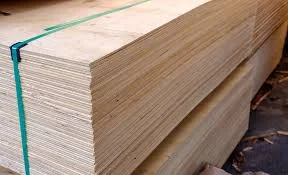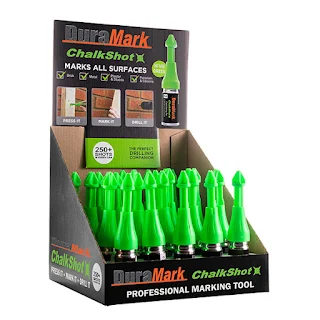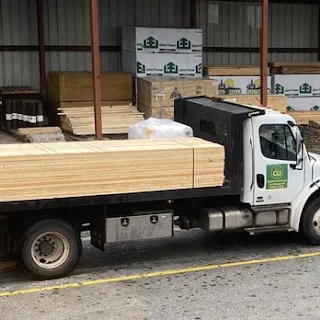The Fascinating (and Sometimes
Ridiculous) History of Doors – From Cavemen to Custom Industrial Doors at
Calumet Lumber
Let’s be real…doors don’t get enough credit. They stand there, quietly doing their job, opening and closing, keeping the world in (or out). But when was the last time you truly appreciated a door?
Well, today’s the day.
We’re diving into the long (and surprisingly dramatic) history of
doors—from prehistoric rock slabs to NASA’s 45-minute mega-doors, and right up
to Calumet Lumber Inc. where we build custom industrial doors on-site and can
special order any door you might need—with or without windows. (Yes, even those
weirdly specific ones you didn’t know existed.)
The Evolution of Doors: From Cavemen
to Castles
The first doors weren’t much more than big rocks strategically rolled in front of cave openings to keep out predators. Functional? Yes. Convenient? Not so much.
By the time the Ancient Egyptians came around, doors became status
symbols. They crafted massive wooden doors, often adorned with elaborate
carvings of gods and pharaohs, proving that even back then, people liked to
show off their front entrances. Meanwhile, in Mesopotamia, someone finally
invented the hinged door, making it much easier to walk through without pulling
a muscle.
The Romans were the first to innovate beyond basic function. They
introduced double doors, sliding doors, folding doors, and even early versions
of automatic doors using pulleys and steam. Some of their bronze doors were so
well-built that they’re still standing today—over 2,000 years later. (If only
all doors lasted that long.)
Fast forward to the Middle Ages, and doors became less about aesthetics
and more about survival. Thick wooden doors reinforced with iron bars and
spikes became essential for castle security. Some had hidden passageways and
murder holes—which, as you may have guessed, were used to pour boiling oil on
unwelcome guests. Medieval door technology was all about keeping people out
(and sometimes keeping them in).
The Doorknob Revolution: Thank You, Osbourn Dorsey
For most of human history, opening a door required pulling a string,
sliding a wooden latch, or just shoving the thing really hard. That all changed
in 1878 when Osbourn Dorsey, an African American inventor, revolutionized door
technology with his patent for a door-closing mechanism—the foundation of the
modern doorknob and door latch.
Now, you might be thinking, "Wait, we didn’t have doorknobs
before 1878?!" Nope. Most people were still tying leather straps
around wooden pegs or—brace yourself—sticking their fingers into knotholes to
pull doors open. (Yes, people willingly did this. No, we don’t want to think
about the hygiene implications.)
Dorsey’s invention changed everything. It provided a secure, easy-to-use
locking mechanism that was durable and reliable. But despite his contribution,
Dorsey’s life remains largely undocumented—a frustratingly common fate for many
Black inventors of his time. He didn’t receive fame, fortune, or even a
Wikipedia page (seriously, someone should fix that), but his invention became
the backbone of door security as we know it today.
So, next time you casually turn a doorknob, remember: Osbourn Dorsey
saved you from sticking your fingers in a hole to open a door. You’re welcome.
Theophilus Van Kannel & The Revolving Door: Because He Hated Holding Doors for People
You ever get stuck in that awkward “Who’s going first?” shuffle at a
doorway? Maybe you hold the door, and suddenly a parade of strangers’ marches
through while you stand there like an unpaid doorman? Well, Theophilus Van
Kannel had enough of that nonsense.
In 1888, he patented the revolving door, and legend has it that his
inspiration came from not wanting to hold doors open for other people. Was he
just an anti-social genius? Maybe. But his invention made perfect sense.
Revolving doors weren’t just about avoiding awkward social interactions
(although that was a perk). They solved a major problem for big buildings: air
pressure and wind resistance.
Skyscrapers, especially in cold and windy cities like Chicago and New
York, had a problem. Opening a standard door would create a wind tunnel effect,
letting in freezing gusts of air in winter and letting out all the expensive
heated air. Not ideal.
Van Kannel’s revolving door acted as an airlock, preventing sudden
temperature shifts while also keeping pedestrian traffic flowing smoothly. This
made them perfect for department stores, office buildings, and hotels, where
constant foot traffic made traditional swinging doors a logistical nightmare.
Interestingly, Theophilus Van Kannel never married, which has led to some
fun speculation that his frustration with human interaction extended beyond
just doorways. Whether or not that’s true, one thing’s for sure: thanks to him,
we now have a way to enter buildings without getting smacked in the face by
someone’s poorly timed exit.
The 20th Century: Commercial Doors
Take Center Stage
By the early 1900s, industrialization and urbanization meant doors needed
to be stronger, safer, and more specialized. Steel doors became the norm in
factories and public buildings due to their fire resistance, durability, and
security.
Automatic doors made their first commercial appearance in the 1950s at a restaurant in Corpus Christi, Texas, where they allowed waiters to pass through hands-free while carrying trays. This innovation quickly spread to hospitals, airports, and department stores, paving the way for the motion-activated doors we use today.
One of the most important safety innovations came in the 1930s: the crash
bar (or panic bar). Before this, exit doors often became death traps in
emergencies—like the 1903 Iroquois Theatre fire, where over 600 people perished
because the doors opened inward and jammed in the chaos. The introduction of
crash bars allowed for quick, easy exits, making commercial spaces much safer.
At Calumet Lumber Inc., we know that doors in commercial and industrial
settings need to be custom-fit for safety, function, and durability. That’s why
we build custom industrial doors on-site, tailored to fire resistance, impact
resistance, and security standards—and if you need something specific, we can
special order any door, with or without windows.
The Biggest, the Smallest, and the
Most Ridiculously Advanced Doors in the World
Let’s talk big doors—because size does matter when you’re launching rockets into space. The largest doors on the planet belong to NASA’s Vehicle Assembly Building at Kennedy Space Center. Standing 456 feet tall, these monstrous doors are three times the height of the Statue of Liberty, proving that when NASA builds something, they go big or go home.
And speaking of home, if you ever feel impatient waiting for your garage
door to open, imagine this: NASA’s mega-doors take 45 minutes just to open or
close. That’s half a lunch break, an entire episode of your favorite TV show,
or about the time it takes to argue over where to eat for dinner. If you ever
plan to watch these beasts in action, bring snacks, a chair, and maybe a
book—it’s not exactly edge-of-your-seat entertainment.
The doors of NASA's Vehicle Assembly Building (VAB) at Kennedy Space Center are opened for each major rocket launch. This includes the assembly and rollout of rockets like the Space Launch System (SLS) for Artemis missions. The frequency of these openings depends on the launch schedule, which can vary based on mission requirements and readiness.
But while NASA holds the title for biggest doors, the record for the smallest functional door goes to researchers at the University of Cambridge. In 2012, they built a microscopic door that’s just a few micrometers tall—which means you can’t see it without a high-powered microscope. (So don’t bother trying to install one on your office cubicle for privacy.)
This tiny door was designed as part of a nanotechnology experiment, proving that science loves building things just because it can. It actually opens and closes, though you’ll need specialized lab equipment—not a doorknob—to operate it. Sure, it won’t replace your office entrance anytime soon, but it does raise the question: Was this necessary? Probably not. But was it cool? Absolutely.
So, whether it’s a door so massive it could fit a 40-story building
inside it, or one so small that even ants would need a microscope to find
it—one thing’s clear: humanity will never stop pushing the limits of doors.
Calumet Lumber Inc.: Your Trusted Source for Industrial Doors Since 1906
From medieval castle gates to NASA’s mega-doors, the evolution of doors
is a testament to human ingenuity, security, and engineering. And whether you
need a standard industrial door, a fire-rated steel door, or a custom-built
solution—Calumet Lumber has been leading the way since 1906.
We build custom industrial doors on-site, so whether you need extra
durability, special dimensions, or windows (or no windows at all)—we can make
it happen. Plus, if you need a special-order door, we can source any type of
door you need to keep your business safe, secure, and efficient.
After all, doors have come a long way from being just big rocks blocking
cave entrances—and at Calumet Lumber, we make sure they’re built to last.
#StayHinged #CalumetLumber #WomenInConstruction #CecoDoors









.jfif)

.jfif)

















